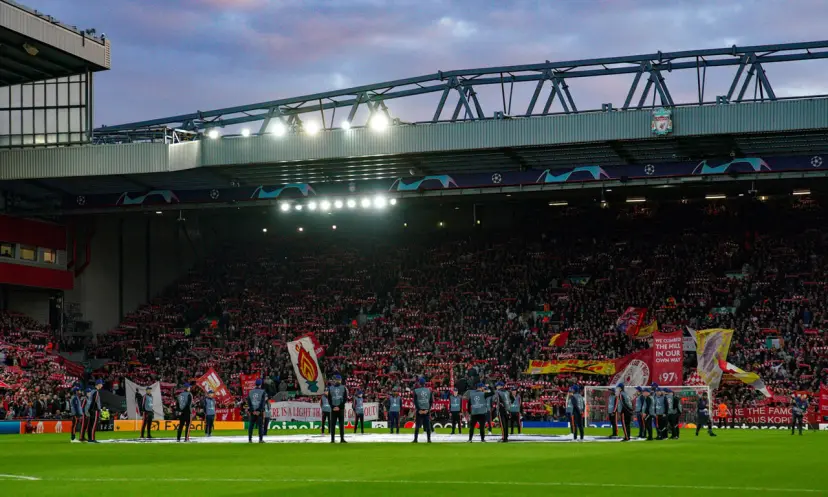World Cup stadiums: Guide to the venues for Qatar 2022
Published:
The eight World Cup stadiums for 2022
Hosting the tournament in Qatar in winter has caused plenty of controversy but now is the time to take a look at the eight World Cup stadiums which will be used.
Plenty has been written about the construction of the venues but here we look at each of the grounds and which matches they will host.
Al Bayt Stadium
Capacity: 60,000
Fixtures: Qatar v Ecuador (Nov 21), Morocco v Croatia (Nov 23), England v USA (Nov 25), Spain v Germany (Nov 27), Netherlands v Qatar (Nov 29), Costa Rica v Germany (Dec 1), B1 v A2 (Dec 4), Quarter-final 4 (Dec 10), Semi-final 2 (Dec 14)

The host venue for the opening match of the tournament is located in the northern city of Al Khor, which is 35km away from Doha. The upper tier of seating, which accounts for almost half of the capacity, will be removed after the World Cup and sent for use in developing nations. The design is based on the tents of nomadic tribes and families in Qatar while a retractable roof plus cooling technology should maintain a comfortable temperature for fans.
Al Janoub Stadium
Capacity: 40,000
Fixtures: France v Australia (Nov 22), Switzerland v Cameroon (Nov 24), Tunisia v Australia (Nov 26), Cameroon v Serbia (Nov 28), Australia v Denmark (Nov 30), Ghana v Uruguay (Dec 2), E1 v F2 (Dec 5)

Based in Al Wakrah in the south, this was the first of the World Cup stadiums to be completed. It opened in May 2019 when it hosted the Amir Cup final and it also staged the Arabian Gulf Cup semi-final between Qatar and Saudi Arabia in December of the same year. Its capacity will drop to 20,000 after the World Cup but it will remain a home for sport and entertainment. The futuristic design is based on traditional dhow boats.
Al Thumama Stadium
Capacity: 40,000
Fixtures: Senegal v Netherlands (Nov 21), Spain v Costa Rica (Nov 23), Qatar v Senegal (Nov 25), Belgium v Morocco (Nov 27), Iran v USA (Nov 29), Canada v Morocco (Dec 1), D1 v C2 (Dec 4), Quarter-final 3 (Dec 10)
Al Thumama Stadium… let's gooooo! #FIFArabCup #Qatar2022 pic.twitter.com/87fzU1RYcG
— Road to 2022 (@roadto2022en) December 14, 2021
The circular design of the stadium is based on the gahfiya, which is a cap worn by men and boys in the Middle East. Capacity will be reduced to 20,000 after the tournament, with a hotel taking the place of the upper tier. It opened in October 2021 when it hosted the Amir Cup final and is 12km south of the capital.
Ahmad Bin Ali Stadium
Capacity: 40,000
Fixtures: USA v Wales (Nov 21), Belgium v Canada (Nov 23), Wales v Iran (Nov 25), Japan v Costa Rica (Nov 27), Wales v England (Nov 29), Croatia v Belgium (Dec 1), C1 v D2 (Dec 3)
Based close to the desert in Al Rayyan – around 14 miles from Doha – this stadium is host to the Al Rayyan Sports Club team and opened its doors for the Amir Cup final in December 2020. Hospitality areas and merchandise stalls outside the ground will be designed to look like sand dunes.
Education City Stadium
Capacity: 40,000
Fixtures: Denmark v Tunisia (Nov 22), Uruguay v South Korea (Nov 24), Poland v Saudi Arabia (Nov 26), South Korea v Ghana (Nov 28), Tunisia v France (Nov 30), South Korea v Portugal (Dec 2), F1 v E2 (Dec 6), Quarter-final 1 (Dec 9)

The third of the World Cup stadiums to be completed lies just 7km away from Doha city centre and can be reached by road or metro. Nearby facilities include training pitches and a golf course with several universities based in the area. The ‘diamond in the desert’ is designed to glow at night and glisten during the day and hosted the 2021 FIFA Club World Cup final.
Khalifa International Stadium
Capacity: 45,416
Fixtures: England v Iran (Nov 21), Germany v Japan (Nov 23), Netherlands v Ecuador (Nov 25), Croatia v Canada (Nov 27), Ecuador v Senegal (Nov 29), Japan v Spain (Dec 1), A1 v B2 (Dec 3), 3rd-place play-off (Dec 17)
Built in 1976, this has been Qatar’s national stadium ever since but it has been renovated for the World Cup. Liverpool won the Club World Cup here in 2019 after beating Brazilian side Flamengo, while England took on Brazil in a friendly 10 years previously. Also hosted the World Athletics Championships in 2019 and is the only one of the World Cup stadiums with any real history.
Lusail Stadium
Capacity: 80,000
Fixtures: Argentina v Saudi Arabia (Nov 22), Brazil v Serbia (Nov 24), Argentina v Mexico (Nov 26), Portugal v Uruguay (Nov 28), Saudi Arabia v Mexico (Nov 30), Cameroon v Brazil (Dec 2), H1 v G2 (Dec 6), Quarter-final 2 (Dec 9), Semi-final 1 (Dec 13), Final (Dec 18)

Situated 15km to the north of Doha, this purpose-built stadium is the centrepiece of the city of Lusail. After the tournament it will be transformed into a community space and most of the seats will be removed but the roof will remain. The roof has been designed to provide shade for the spectators but allow enough light through to help the grass grow.
Stadium 974
Capacity: 40,000
Fixtures: Mexico v Poland (Nov 22), Portugal v Ghana (Nov 24), France v Denmark (Nov 26), Brazil v Switzerland (Nov 28), Poland v Argentina (Nov 30), Serbia v Switzerland (Dec 2), G1 v H2 (Dec 5)
Named after the international dialling code for Qatar, 974 is also the exact number of shipping containers which were used in the construction of a stadium which will be dismantled once the World Cup 2022 is over. It is located across the water from Doha’s West Bay.









